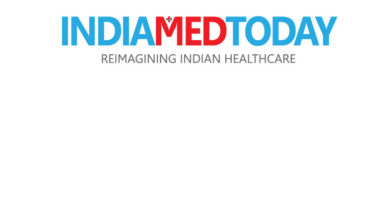Post Budget Quote 2018 – Gautam Khanna, CEO at PD Hinduja Hospital & MRC

Union Budget 2018 can clearly be called a historic one as far as Healthcare is concerned.
There were 2 key highlights this year. The first was the proposed launch of the flagship National Health Protection Scheme which would cover 10 crore poor and vulnerable families and provide up to ₹5 lakh per family per year for hospitalization in secondary and tertiary care institutions. With 50 crore beneficiaries, this would be one of the largest benefits program of its kind in the world. Not only is this scheme a step towards the universal health coverage proposed by the National Health Policy 2017, but the inclusion of secondary and tertiary care hospitals indicates that the government is going beyond its focus on primary healthcare. This scheme, thus, will not only make quality and critical care more affordable for the masses, but it would provide the boost to secondary and tertiary care hospitals for expansion into smaller cities and villages, thus improving accessibility.
The proposal to open up 1.5 Lakh healthcare centres to provide free essential drugs and diagnostics is also equally laudable and reflects the government’s concern for the common man’s health.
Both the schemes are focus of this year’s budget. It is vital that they are implemented and monitored effectively and efficiently so that they enable providing high quality patient care and that they truly benefit the citizens.
In addition to this, the government increased the health and education cess to 4%. This 1% increase will bring in an additional amount of ₹ 11,000 crore which can be used for the government-funded programs in healthcare and education.
Announcement of setting up 24 new medical colleges, one in each state, is a welcome step, which will not only help to reduce the shortage of doctors, but will also help in even distribution of medical facilities and doctors across the states in the long term. However more needs to be done in this area. Medical education is expensive and time consuming and today’s youth have choice of several other professional streams, with shorter lead times. Allied health services professionals and nurses are equally in short supply and facilities to promote education facilities in these areas should also be introduced.
The rise of tuberculosis is a growing concern in India and the government’s aid of ₹ 600 crore for nutritional supplement for all TB patients @ ₹ 500 per month for the treatment duration, will provide relief. This also poses opportunities for public private partnerships for effective and efficient execution. We also hope the government continues its efforts to tackle other communicable diseases like malaria, HIV.
Besides the health insurance plan, the government has also introduced favourable changes for medical expenditure: (a) Standard deduction of ₹ 40,000 introduced in lieu of transport and medical reimbursements for salaried employees, (b) benefit of a deduction of ₹ 50,000 for medical insurance for senior citizens, and (c) deduction limit of ₹ 1,00,000 for critical illnesses.
As senior citizens will take a large portion of our total population in the coming years, favourable insurance for them would increase affordability and hence boost the entire ecosystem (patients, insurers, care providers) of healthcare specifically targeted for senior citizens.
Besides policies for the health sector, there were other plans announced this year, which would indirectly impact the health sector. Chief among them was the focus on pollution control and sanitation (plan to open 2 crores additional toilets). These would definitely impact public health by reducing infectious and pollution-related diseases, thus reducing the burden on health systems by some degrees.
While there’s a lot in the budget for the healthcare sector, some items in our wish list remain. These include an increase in public spending on healthcare, universal health coverage, public private partnerships, implementation of GST to lower the cost of running of hospitals, digital healthcare and incentivizing healthcare innovation, research and technology.
On the whole1-Feb-18, this budget marks the importance of social sectors and the government’s focus on healthcare for the common man is a step in the right direction for India’s health.

